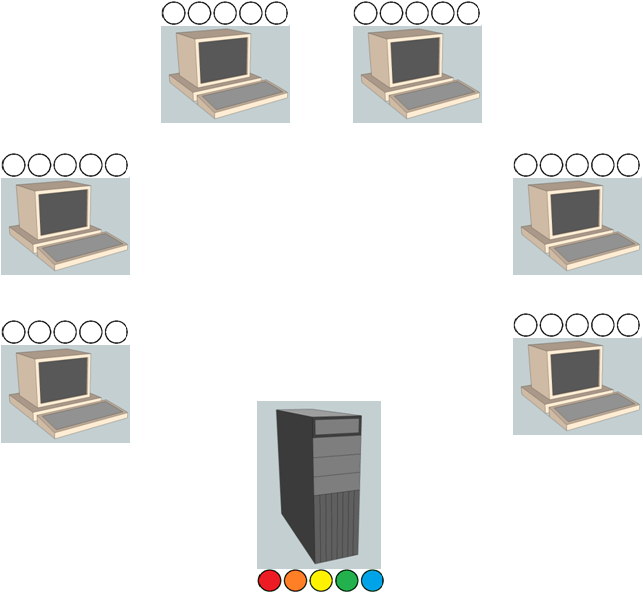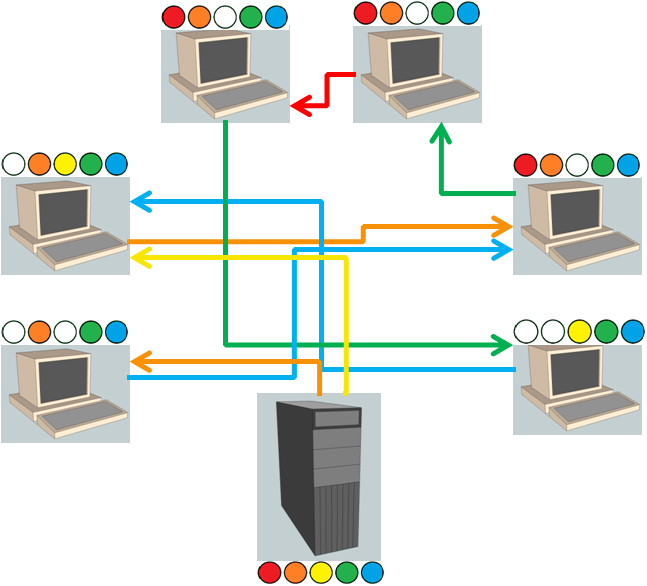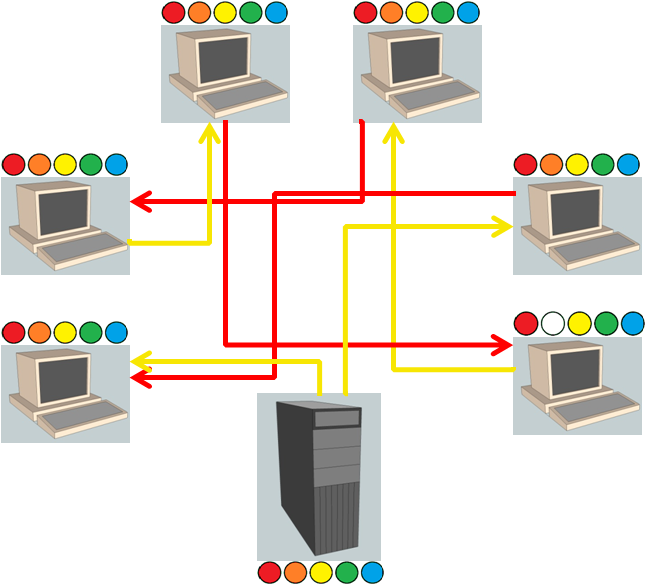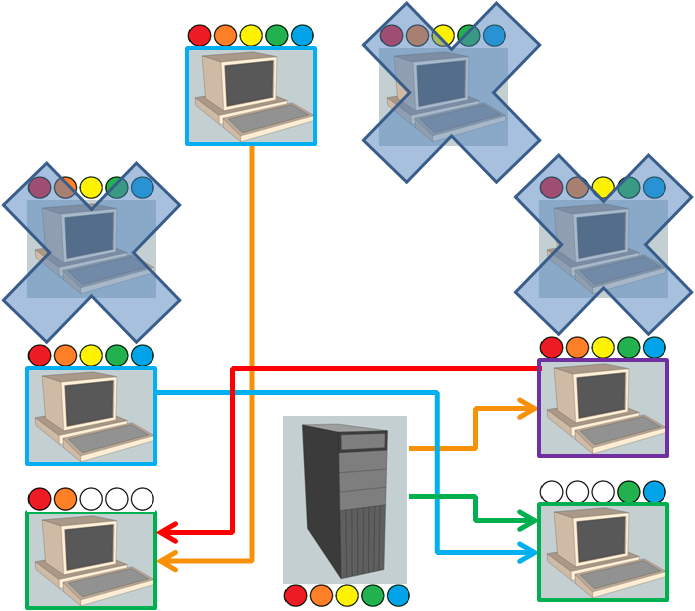The BitTorrent peer-to-peer file sharing protocol takes advantage of the fact that clients can upload as well as download. With both the clients and the server contributing to distribution of files, information can be shared much more quickly than would be possible with the clients downloading from the server alone. In addition, with BitTorrent, files can remain available on the network even if the original hosting server is taken offline, as long as the nodes which are still connected collectively have all of the pieces of the file.
Here is an example of how a file could be distributed from a single server to six, and then eight, client nodes. The assumptions made here are that the server has enough bandwidth to upload two pieces of the file at a time; clients can download two pieces and/or upload one piece. Although the file in the example is shown as broken into five pieces, in reality, large files would be broken into hundreds of small pieces.
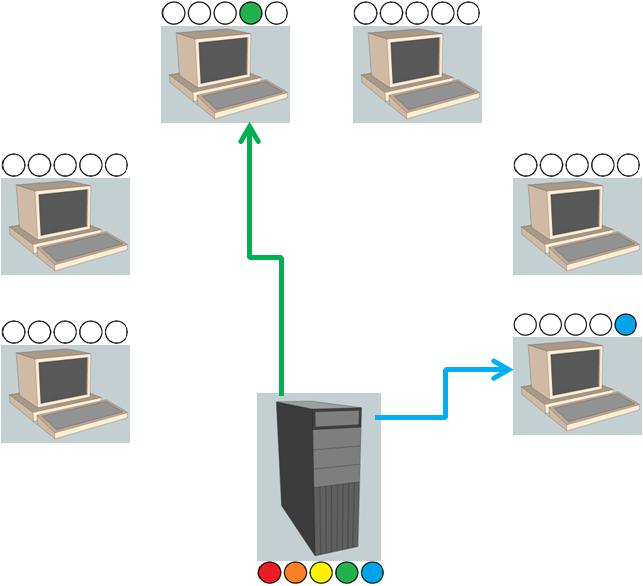
The server uploads two (different) pieces to first two requesting clients.
These clients now each have one piece and can upload them to others.
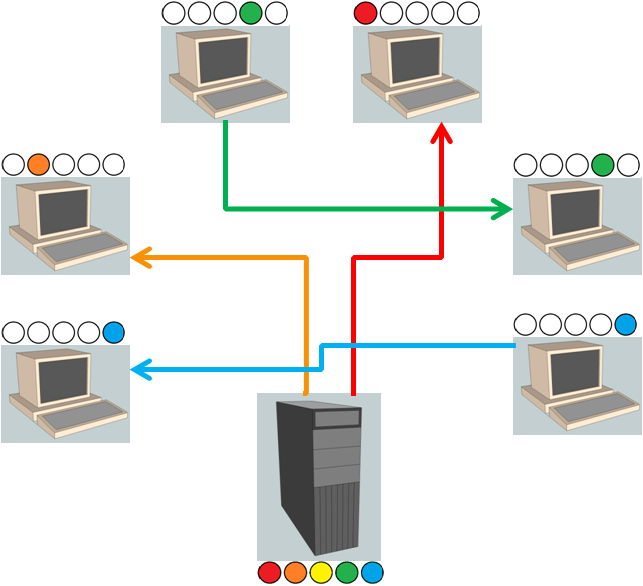
The server uploads two more, different pieces to two other clients. The first two clients which received pieces start sharing them, speeding up sharing.
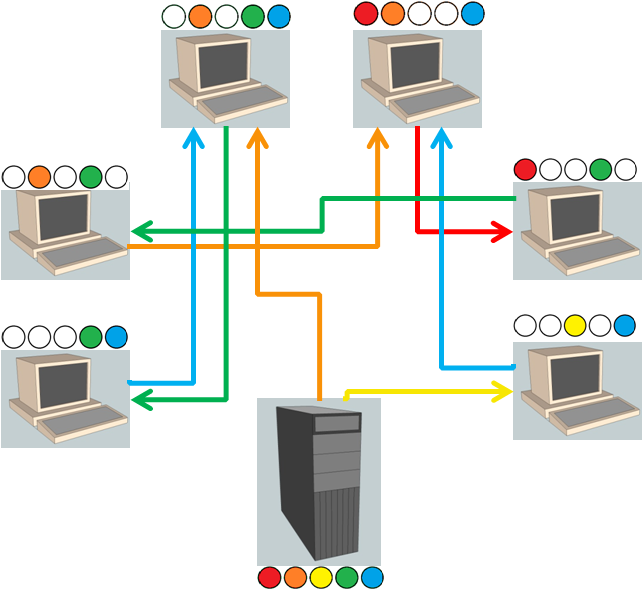
The server uploads two more pieces, including the only piece not yet shared. All six clients also share pieces they already have; the “torrent” is in full swing!
(At this point, all pieces would be available even if the server disconnects.)

